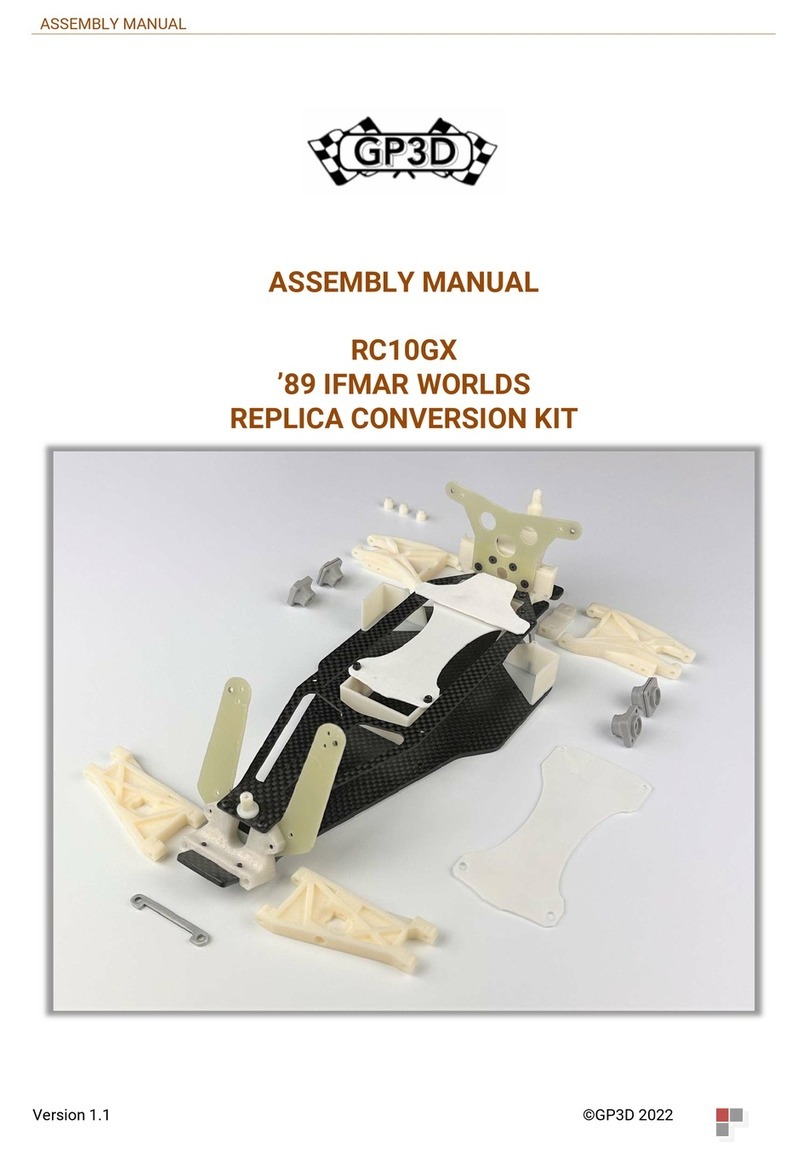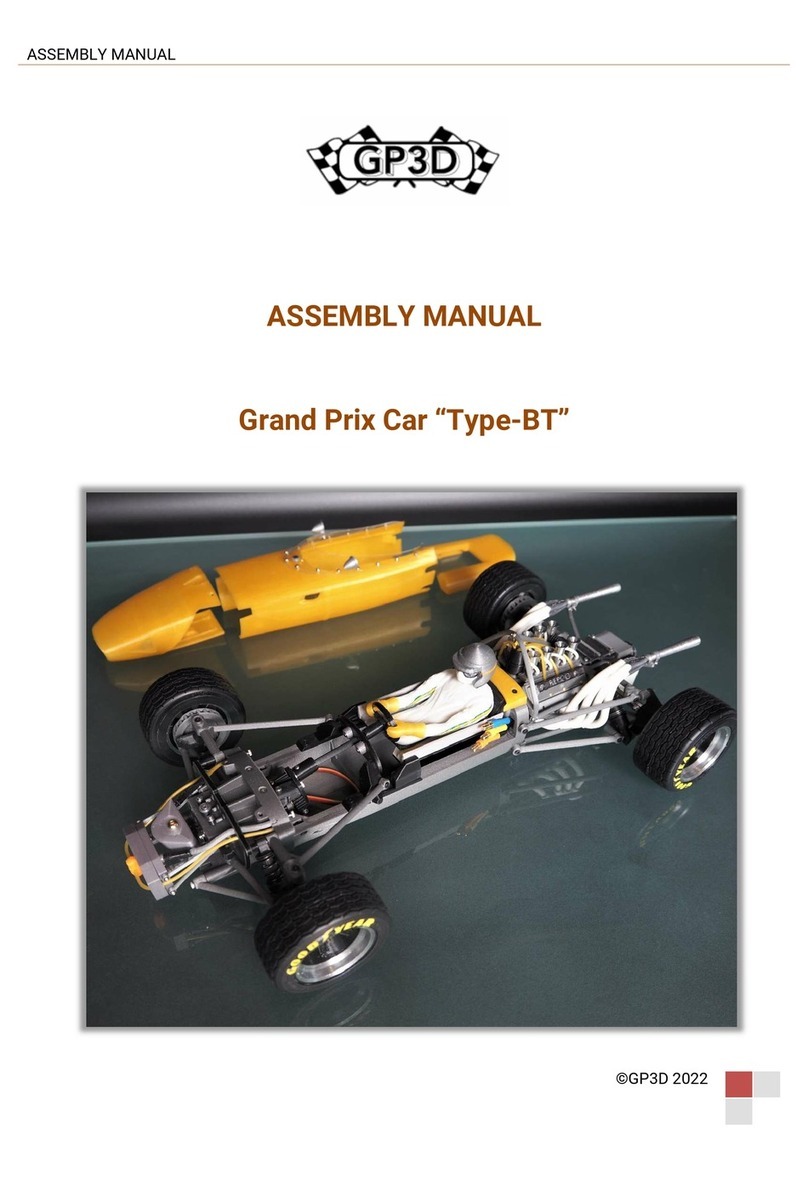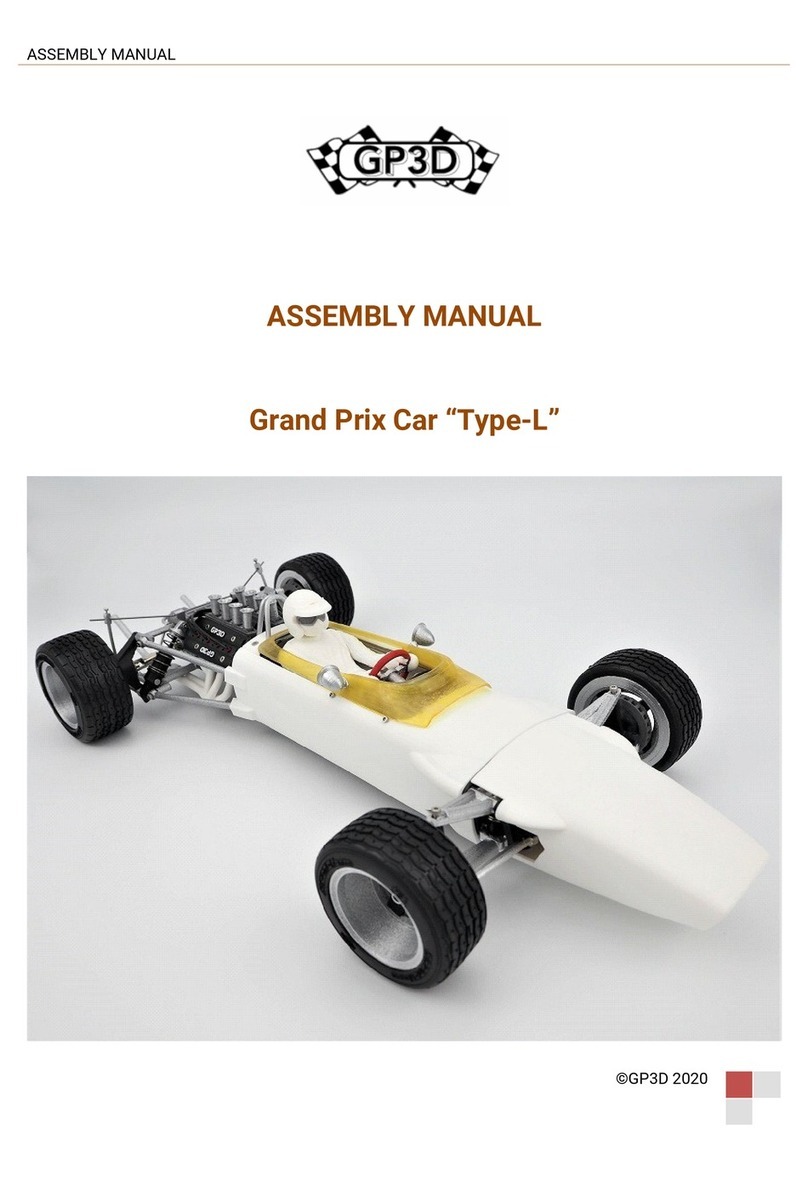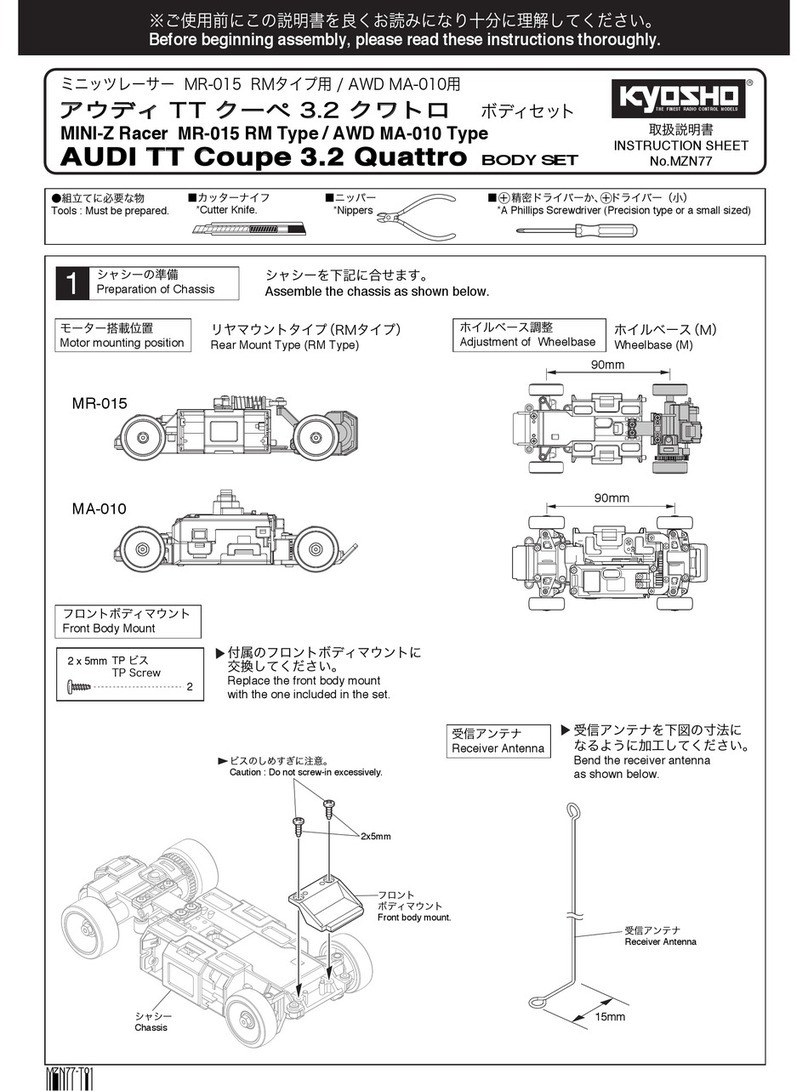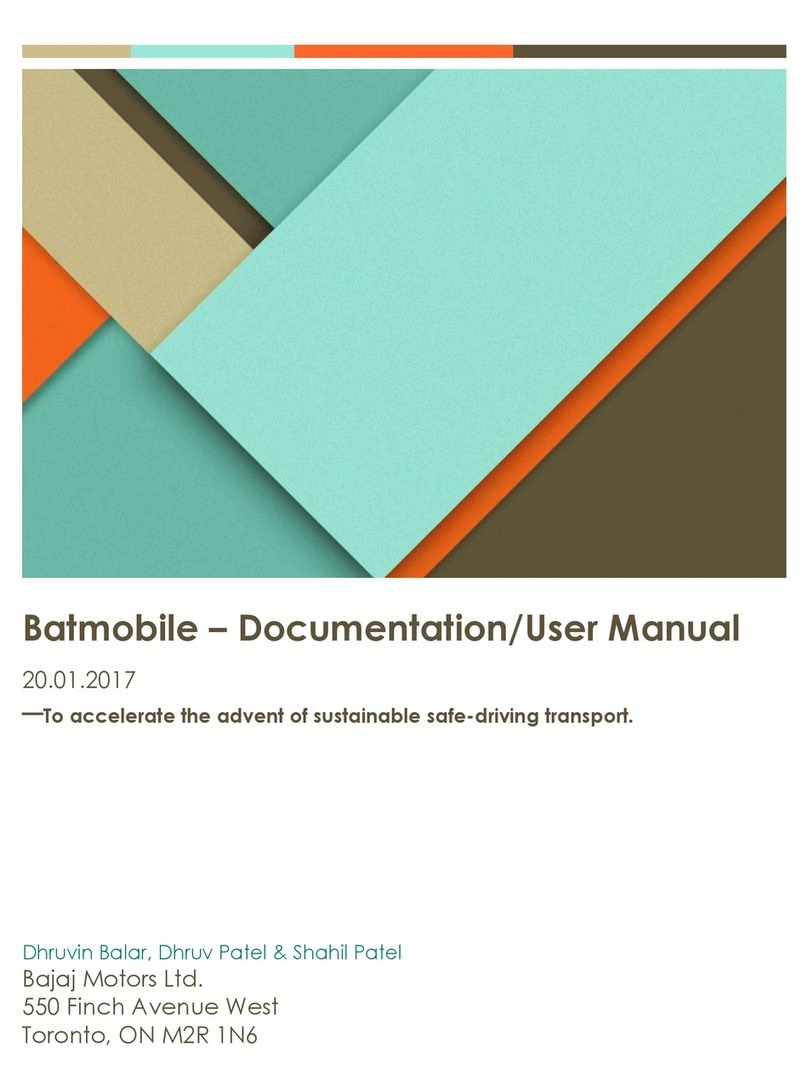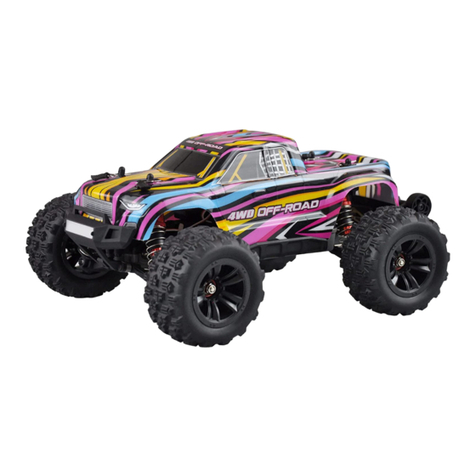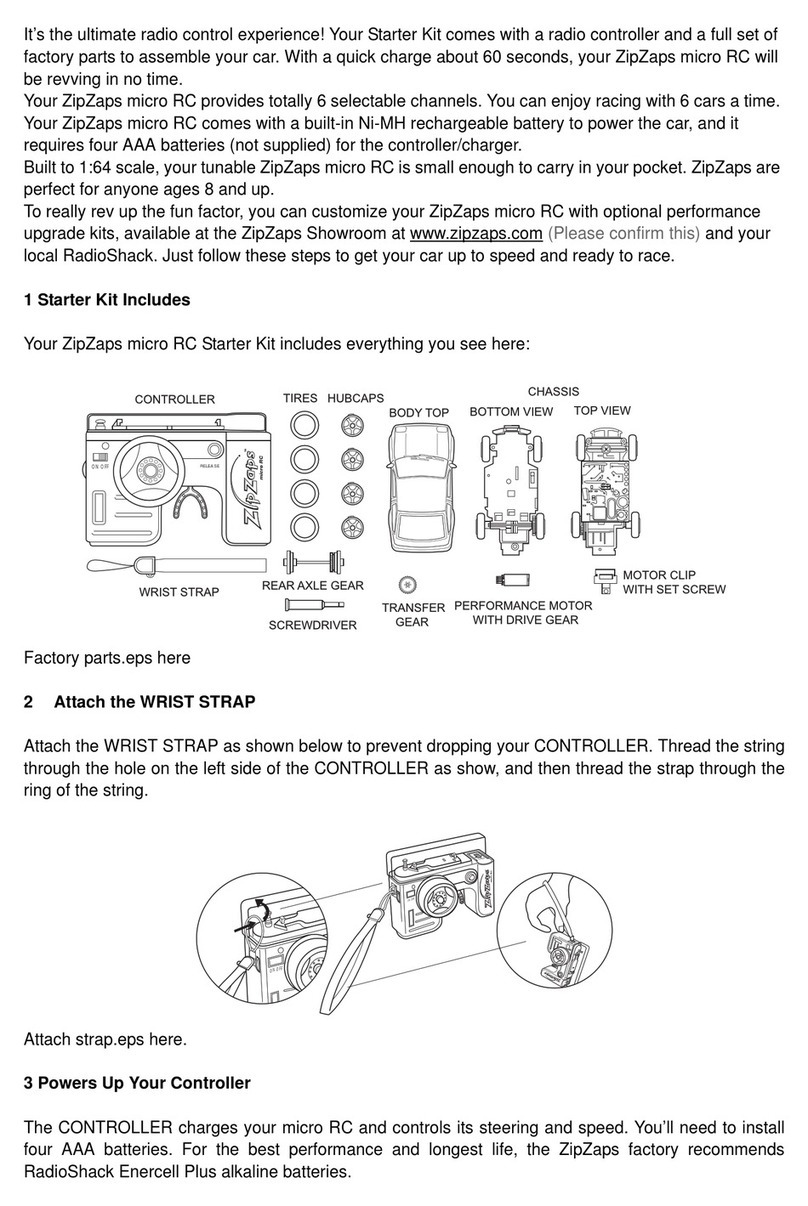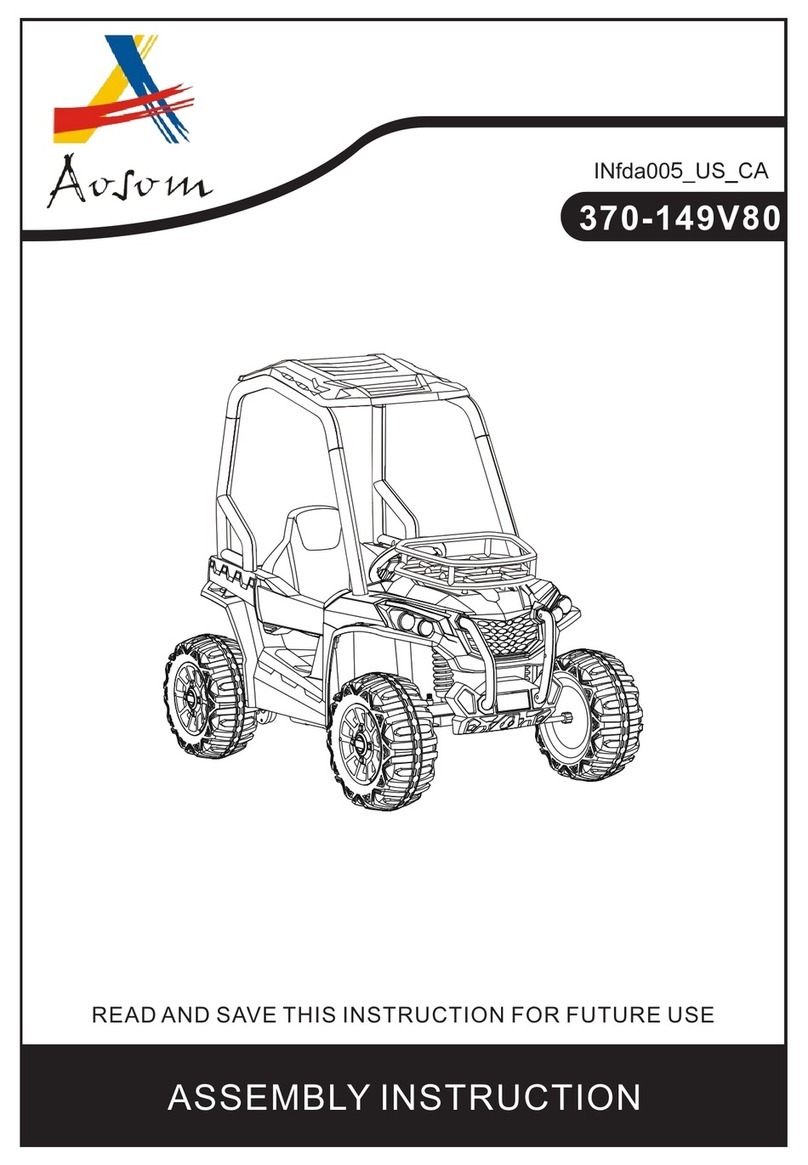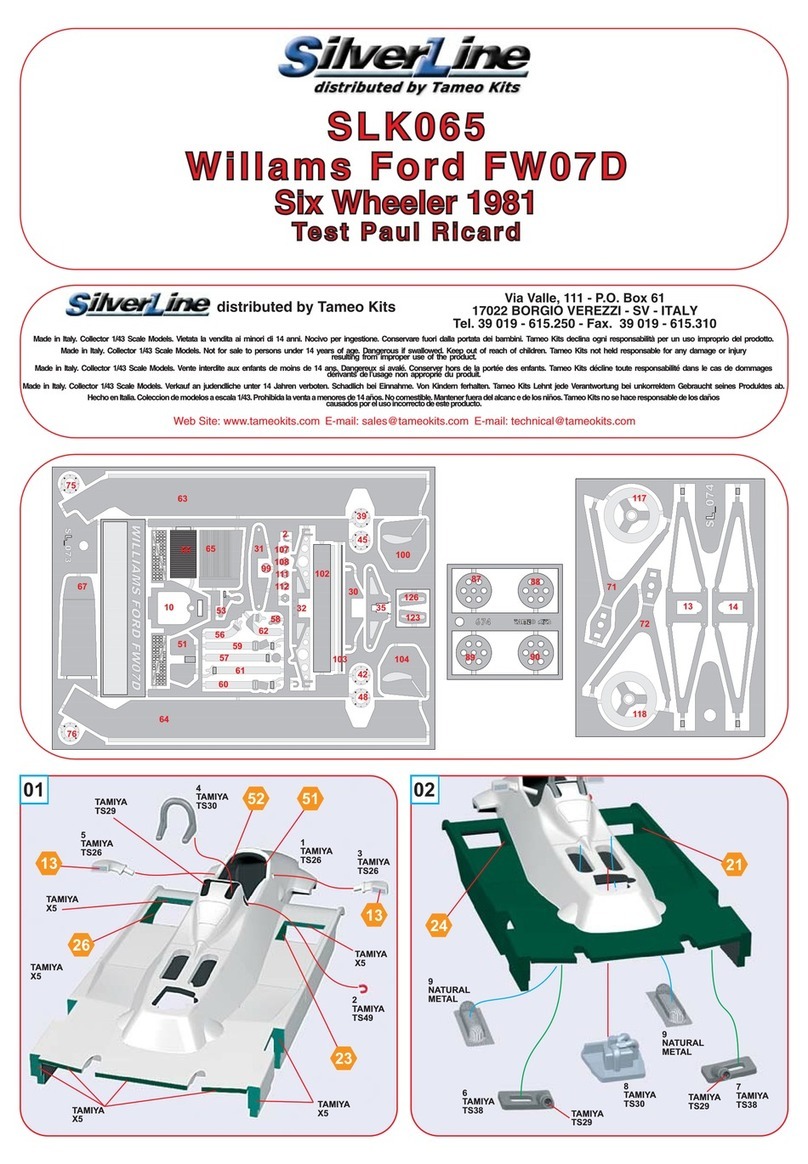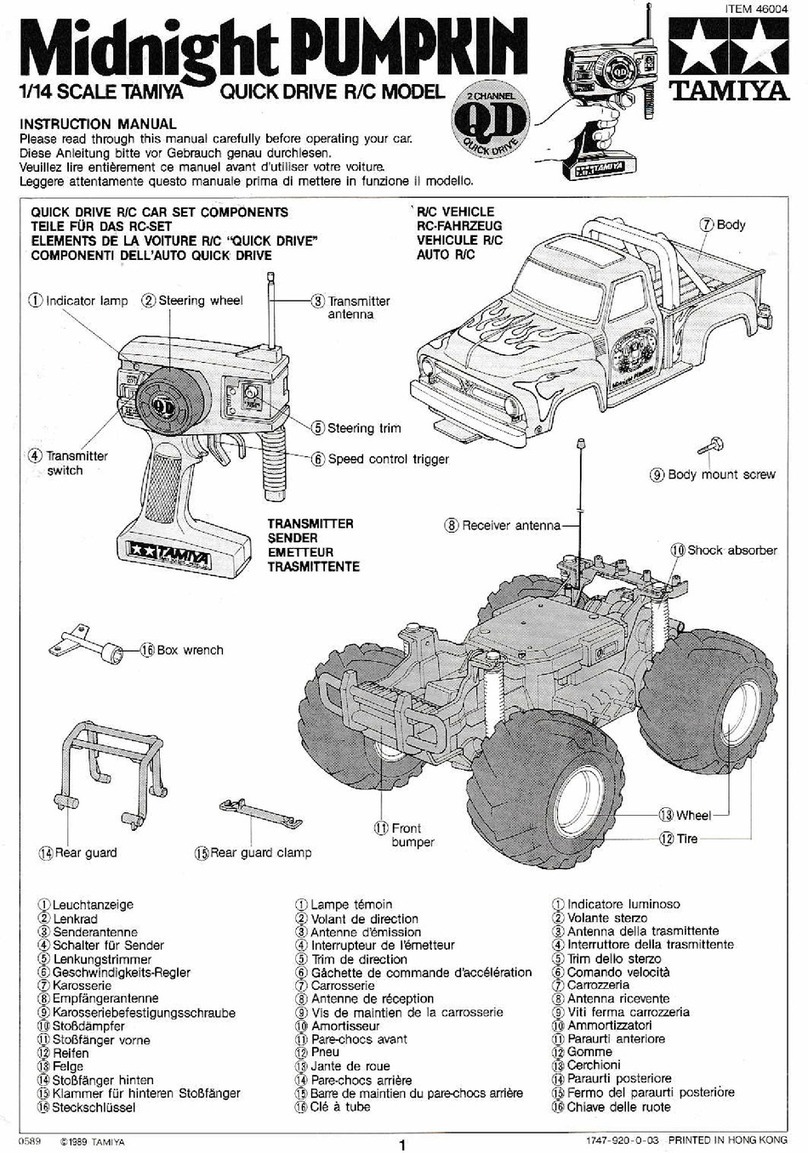GP3D Type-H Installation and operating instructions

ASSEMBLY MANUAL
©GP3D 2021
ASSEMBLY MANUAL ADDENDUM
Grand Prix Car “Type-H” Body Set

INTRODUCTION
Section 1 - Page 2
STEP 1 – THANK YOU!
We would like to thank you for purchasing the GP3D Grand Prix “Type-H” Body Set for use with the
GP3D RC car kit.
This kit is a totally new fusion of radio control cars, plastic model making, 3D printing and of course
the glorious and iconic “Grand Prix” era of the 1960’s.
The various printed components have been made from carefully selected polymers to achieve
various characteristics, such as; strength, flexibility, impact resistance, colour and texture. This
results in scale looks and colours (without the need for painting unless desired!) whilst ensuring a
durable and functional RC car.
The inherent nature of 3D printing parts means for a given material and shape it will not be quite as
strong as an injection moulded equivalent. To counteract this, we have used the latest available high
quality and hence higher cost 3D printing filaments to ensure an equivalent durability to other plastic
moulded RC kits. More information about these materials is covered in the next step!
We hope you love and enjoy building and driving this model, so we are always available to help and
support and questions or issues you may have. We would also love to receive pictures of your
finished model in your chosen livery that we can add to our online gallery!
Please contact us if needed: grand.prix.3d@gmail.com
Information and all spare parts are available in our online shop: www.GrandPrix3D.com

INTRODUCTION
Section 1 - Page 3
STEP 2 – TERMINOLOGY
3D Printing All the plastic components in this kit are 3D printed using the latest equipment
and high quality, high-cost materials.
Nylon G/X Nylon is a very impact resistant plastic. We use two variants of this material;
NylonG is glass fibre impregnated and is used for the main chassis, bulkheads,
engine bay and suspension components. NylonX is carbon fibre impregnated
and provides a stiffer component mainly used in the front steering links, shock
absorbers and diff output hubs.
PC Blend Is a blended variant of polycarbonate and is extremely strong and impact
resistant. It’s used in the wheels, uprights, gears, axles, battery retainer and
cosmetic parts like the rollover hoops, trumpets and mirrors.
TPU Is an amazing flexible polymer we have used for the body shell and the ‘active’
driver figure! This material is super tough and capable of absorbing any
impacts. The kit comes with all white colour, however we also offer these option
parts printed in colours including; red, blue, yellow and black. The texture and
finish perfectly captures the essence of the grand prix cars of the 1960’s era.
You can also paint them with any flexible paint, such as polycarbonate paint to
achieve your favourite driver/livery!
CPE Is a high-end industrial manufacturing material with resistance to heat and
impacts and available in semi-transparent tinted colours; used for the
windscreens. The windscreens are very thin and exposed, ensuring the scale
appearance, however the tough CPE can still absorb impacts before breaking.
PETG Carbon Is a strong and hard polymer we have used for its cool matt texture for the
dashboard and rocker covers.
PLA Is the most basic and cheapest 3D printing material, we’ve only used it for the
cosmetic engine bay and gearbox detail panels due to its fine accuracy.
Brim For many of the printed parts a thin extra material layer is used during printing
to ensure the part does not detach from the print bed, this is called a ‘brim’. We
remove most of the brim material during post processing the components, but
any remains should be removed using a scalpel and sand paper.
Hairs/blobs During the printing process sometimes very fine ‘hairs’ or small ‘blobs’ of plastic
remain on the part. We remove most of these during post processing the
components, but any remains can be removed using a scalpel and sand paper.
M1.6, M2, M2.5, M3 These four sizes of bolts/washers/nuts are used in this kit. Bolts all have Allen
socket head unless specified otherwise.
M#cs The ‘cs’ part refers to counter sunk head.
M#button The ‘button’ part refers to button head.
M# x10mm Measurement in millimetres indicates the length of the screw thread. For
socket/button head this excludes the head, for counter sunk includes the head.
M# nylock nut The nylock nuts have the nylon insert part of the thread to resist coming loose.

INTRODUCTION
Section 1 - Page 4
STEP 3 – ICONS & SYMBOLS
Dark orange bullet Standard bullet for general text/instructions
Coloured bullet Coloured bullets match text with coloured arrows/indicators on images
Arrow Images are augmented with arrows and indicators colour matched to
the bullets (noted above)
x2
Make 2 Indicates you need to repeat this step to build 2 items, or Left and Right.
Gentle Exercise care and love and gently tighten bolts/nuts!
Information Indicates some extra information or hints or options
Very Important! Highlights a very important item to take note
Check Check your assembly matches the picture

INTRODUCTION
Section 1 - Page 5
STEP 4 – LABELS GUIDE
Bags All the bags are labelled with a bag number and name and a type. Each
Bag number/name correlates to the original Type-L designation and
supplements/replaces the parts from your original kit.
Bag Number Bags are numbered in the sequence and correspond exactly to each
SECTION of the assembly manual.
Bag Name Each bag is named, also correspond to the assembly section.
Bag Type Each bag in the pair contains either; Components or Hardware.
Bag QR Code This links to the Bag-specific parts list on the GrandPrix3D website
Bag Type: Components The larger bag containing the section required parts, and also contains
the smaller hardware bag.
Bag Type: Hardware The small bag contains all the required hardware such as screws, nuts,
shims, bearings etc.
Other parts Some larger parts are not bagged or labelled, but these will be
identifiable in the images! E.g.: Body!

INTRODUCTION
Section 1 - Page 6
STEP 5 – TOOLS
Some of the tools you used for building the original kit will be used for fitting this Body Set…
Tools:
Allen drivers 1.3mm, 1.5mm (and for disassembly; 2.0mm & 2.5mm)
Socket Driver 5.5mm (for the M3 wheel nuts)
Scalpel Trimming excess material off plastic parts. Optionally cutting out stickers.
Scissors Cutting out stickers.
Sand paper From your original kit, or any grit you desire to clean up edges of parts if
needed.
Optional:
Small Pliers Can be useful inserting and removing the suspension hinge pins.
Tweezers Pick up/hold smaller screw/items!
Callipers/ruler For measuring screws to ensure correct usage

INTRODUCTION
Section 1 - Page 7
STEP 6 – TECHNIQUES
Always be GENTLE when tightening screws for this entire build! A little trick to keep in mind is
imagine yourself softly petting our kitten ‘Oreo’.
Nothing should be over tightened as this can damage the printed parts. As soon as you feel the
bolt bottom-out tight then STOP!

INTRODUCTION
Section 1 - Page 8
STEP 7 – HOW TO USE THIS MANUAL ADDENDUM
Addendum This manual is not a “complete stand-alone” manual as per the original Type-L
kit manual. Please use this in conjunction with the original manual.
This manual contains all the variations that specifically relate the new parts of
this Type-H Body Set.
The parts bags and sections correlate to the original manual and call-outs are
noted where you can refer back to the original, especially for installation of
some parts such as the Front Bulkhead Plate, Motor Plate and Gearbox Plate
as they are identically designed parts and only differ in their colour.
Support And also remember we are here to support you with your GP3D experience,
please email us at any time for questions you may have or to resolve any
issues that occur
@gmail.com
Table of contents
Other GP3D Motorized Toy Car manuals
Popular Motorized Toy Car manuals by other brands

REVELL
REVELL SnapTite 2017 FORD GT quick start guide
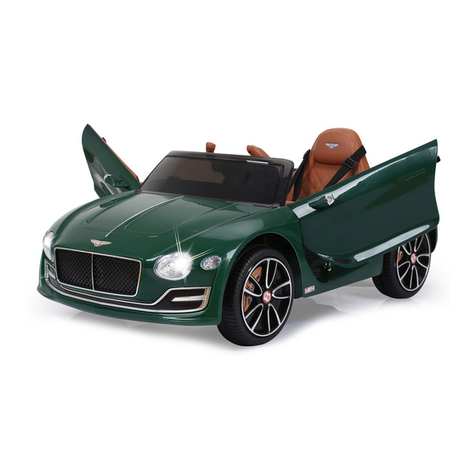
Jamara
Jamara Bentley EXP12 Instruction
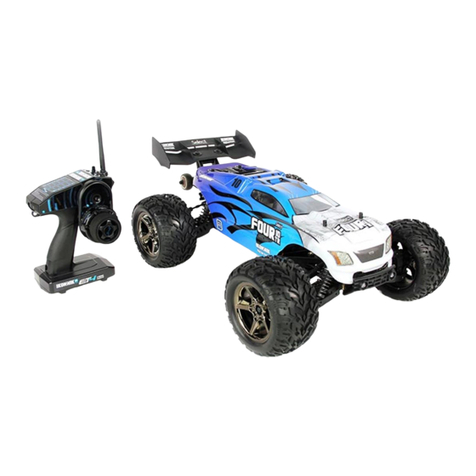
Helion
Helion four 10 tr quick start guide

Serpent
Serpent S811 Cobra Truggy Instruction manual & reference guide

Serpent Model Racing Cars BV
Serpent Model Racing Cars BV 960 instruction manual
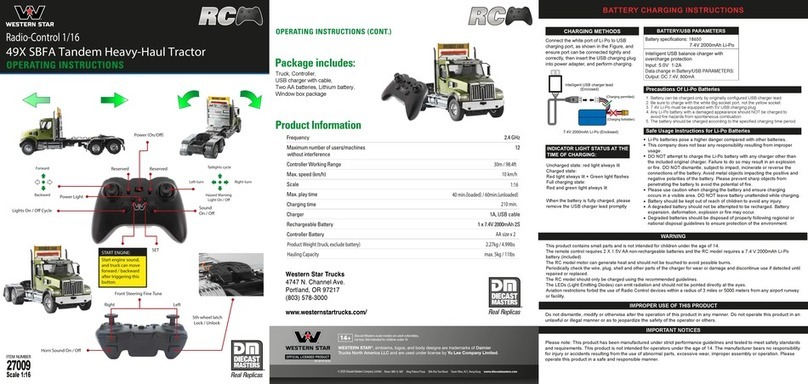
Western Star
Western Star 49X SBFA Tandem Heavy-Haul Tractor operating instructions
